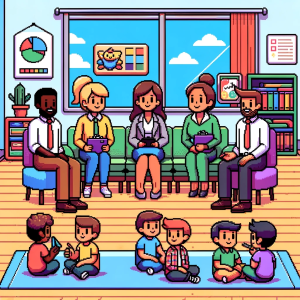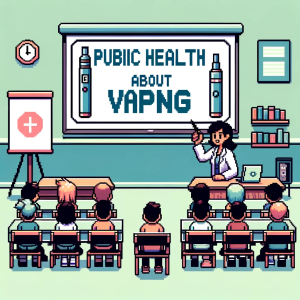
Giving Students a Real Voice in Schools
Schools are designed to shape young minds, yet they often overlook the most powerful resource in improving student well-being: students themselves. Research on Health Promoting Schools (HPS)—a model focused on creating a whole-school approach to well-being—reveals something revolutionary: When kids have a meaningful say in shaping their school environment, their mental health improves dramatically.
So why aren’t more schools doing it?
Let’s break it down.
What Happens When Students Are Truly Engaged?
A recent scoping review on student engagement in school health promotion paints a clear picture: When students actively participate in decision-making about their health and school environment, they thrive.
Think about it—kids spend nearly half their waking hours in school. Their environment profoundly influences their mental well-being. Yet, too often, mental health initiatives are top-down, designed by administrators and psychologists without direct input from the students they aim to help.
The research found that participatory engagement, where students are involved in discussions, planning, and action, leads to:
✅ Higher motivation and resilience – Students feel a greater sense of control over their lives and mental health.
✅ Stronger peer connections – Engaging in group-based decision-making fosters social bonds, reducing loneliness and isolation.
✅ Improved coping skills – Kids learn how to identify problems, advocate for solutions, and implement real change—skills that serve them well beyond the classroom.
But here’s the catch: Most schools don’t make it easy.
The Barriers: Why Aren’t We Listening to Kids?
Despite the benefits, real student engagement is rare. Why? The research highlights a few key roadblocks:
🚧 School Structures Are Too Rigid – Traditional school environments often prioritize standardized test scores and rigid curriculums over student-driven initiatives. Mental health programs become one-size-fits-all rather than responsive to students’ needs.
🚧 Adults Underestimate Kids’ Capabilities – There’s a common belief that children and teens lack the maturity to contribute meaningfully. But studies show the opposite: When given the opportunity, students propose insightful, actionable ideas.
🚧 Lack of Training for Teachers – Most educators weren’t trained to facilitate student-led initiatives. Without the right tools, they might struggle to balance authority with empowerment.
The Solution: A Real Seat at the Table
If we want to improve kids’ mental health, we need to stop making decisions for them and start making decisions with them. Here’s how schools can take action:
🔹 Create Student Health Councils – Let students drive the conversation about their well-being, from school policies to daily wellness activities. Research shows that when students help set health priorities, they’re more invested in making them work.
🔹 Use Participatory Learning Models – Instead of simply teaching mental health concepts, schools should involve students in real-world projects. One successful approach, the IVAC model (Investigation, Vision, Action, Change), helps students turn ideas into tangible improvements in their schools.
🔹 Train Educators in Facilitation – Schools should provide professional development on how to engage students in meaningful ways, moving beyond token participation to genuine collaboration.
🔹 Make Mental Health Part of the School Culture – Policies should explicitly recognize student voice as essential in shaping a supportive school environment. This isn’t about an occasional student survey—it’s about integrating student perspectives into every aspect of school life.
What This Means for Parents and Educators
Parents, teachers, and school psychologists all play a role in making this shift happen. If you’re wondering what you can do, start by asking:
👉 Parents: Have you asked your child how they feel about their school’s approach to mental health? What changes would they make? Advocate for their ideas at school board meetings and with teachers.
👉 Educators: How often do you invite students to co-create classroom policies, learning activities, or wellness initiatives? Small shifts in classroom dynamics can make a big difference in student empowerment.
👉 School Psychologists: Are you including students in mental health strategy meetings? Their lived experiences provide insights no academic theory can replicate.
The Bottom Line: Kids Know What They Need
The research is clear: When students feel heard, their mental health improves. They develop stronger coping skills, deeper connections, and a greater sense of belonging. And isn’t that what every parent and educator wants?
The question isn’t whether student engagement works—it’s whether we’re willing to give up some control and trust kids to be part of the solution.
So, what’s the biggest mental health challenge you see in schools today? How could students play a role in solving it? Drop a comment below or share this post with a fellow educator or parent. Let’s start a conversation that puts kids at the center of their own well-being.
Become Your Community’s Educational Hero!
Unlock critical mental health insights and cutting-edge education research for only $5/month or $50 annually. This Week in School Psychology simplifies complex topics and empowers educators and parents alike. Your subscription keeps independent, innovative science alive. Join today and champion transformative education!



